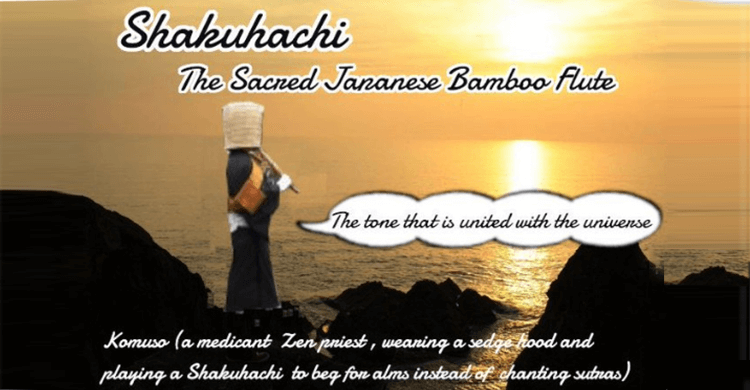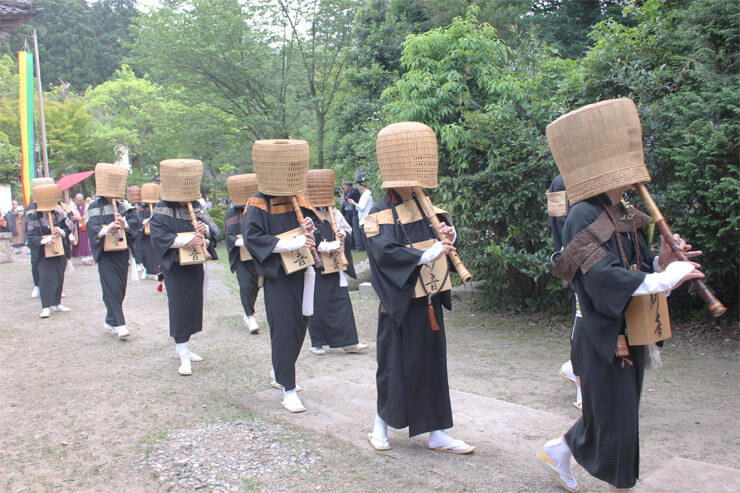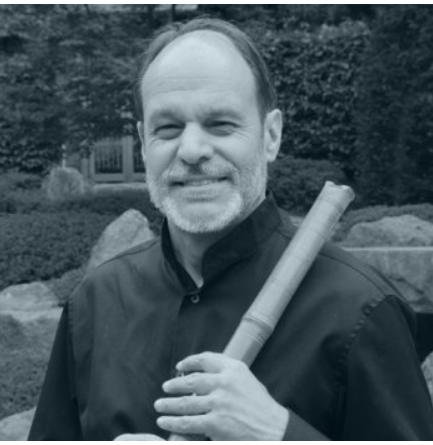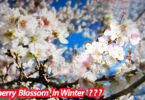First, let’s listen to the soulful sound of “Shakuhachi” for a short while.
What’s Shakuhachi ?
It is a Japanese longitudinal end-blown Bamboo flute. It was originally introduced from China into Japan in the 6th century and underwent a resurgence in the early Edo Period.
Hello everyone how are you? Today’s theme is “Shakuhachi” which is one of “Cool Japan”,japanese musical instruments, along with “Koto“, “Shamisen“, and “Wadaiko” that are described at other blogs in datail.
We can say that Generation millennials may find the traditional shakuhachi bamboo flute an old-fashioned instrument. In fact, there is a dwindling number of people that are interested in learning how to play the instrument these days.
But before this musical instrument gained popularity among people in the past generations, Zen priests used this instrument as a tool for meditation during the Edo Period (1603-1868).
The oldest shakuhachi in Japan is currently stored in Shōsō-in, Nara.
It is traditionally made of bamboo, but versions now exist in ABS(a common thermoplastic polymer) and hardwoods.
The instrument is tuned to the minor pentatonic (based on five tones)scale.

Shakuhachi ( five‐holed vertical and the Sacred Japanese Bamboo Flute)
The name shakuhachi means “1.8 shaku”, referring to its size. It is a compound of two words: Shaku is an archaic unit of length equal to 30.3 centimeters (0.994 English foot) and subdivided in ten subunits.
Hachi means “eight”, here eight sun, or tenths of a shaku. Thus, “Shaku-hachi” means “one shaku eight sun” (54.54 centimeters), the standard length of a shakuhachi.
It was used by the monks of the Fuke sect of Zen Buddhism in the practice of suizen which is a Zen practice consisting of playing the shakuhachi bamboo flute as a means of attaining self-realization. The monks from the Fuke sect of Zen who practiced suizen were called komusō (虚無僧; literally “emptiness monks”)., blowing meditation.
During the medieval period, shakuhachi were most notable for their role in the Fuke sect of Zen Buddhist monks, known as komusō(“priests of nothingness,” or “emptiness monks” , who used the shakuhachi as a spiritual tool.
Their songs (called “honkyoku“) were paced according to the players’ breathing and were considered meditation (suizen) as much as music.
Travel around Japan was restricted by the shogunate at this time, but the Fuke sect managed to wrangle an exemption from the Shogun, since their spiritual practice required them to move from place to place playing the shakuhachi and begging for alms (one famous song reflects this mendicant tradition, “Hi fu mi, hachi gaeshi”, “One two three, pass the alms bowl”.
It was played to beg for alms instead of chanting the sutras.
They persuaded the Shogun to give them “exclusive rights” to play the instrument. In return, some were required to spy for the shogunate, and the Shogun sent several of his own spies out in the guise of Fuke monks as well.
This was made easier by the wicker baskets (tengai ) that the Fuke wore over their heads, a symbol of their detachment from the world.
Western contemporary music
The Australian Shakuhachi Master and composer Jim Franklyn (as shown below) has composed an impressive number of works for solo shakuhachi, also including electronics.
After an extensive research and consultation with virtuoso Yoshikazu Iwamoto, British composer John Palmer has pushed the virtuosity of the instrument to the limit by including a wide range of extended techniques in Koan (1999, for shakuhachi and ensemble).
Carlo Forlivesi’s composition for shakuhachi and guitar Ugetsu “The performance techniques present notable difficulties in a few completely novel situations.
An audacious movement of ‘expansion’ of the respective traditions of the two instruments pushed as they are at times to the limits of the possible, the aim being to have the shakuhachi and the guitar playing on the same level and with virtuosity (two instruments that are culturally and acoustically so dissimilar), thus increasing the expressive range, the texture of the dialogue, the harmonic dimension and the tone-colour.”
New York-born musician James Nyoraku Schlefer both plays, teaches, and composes for shakuhachi.
Finally, let’s listen Avicii “Wake Me Up” Bamboo Flute Orchestra with Shakuhachi!
last but not least
Please forgive my personal favorite song “Sad Sake“, every time I listen to it, I feel like ending up in tears.
let’s listen “Zen meditation Music, Relax, Meditation, Sleep, and Ambience with Shakuhachi and the lyrics are in English!












